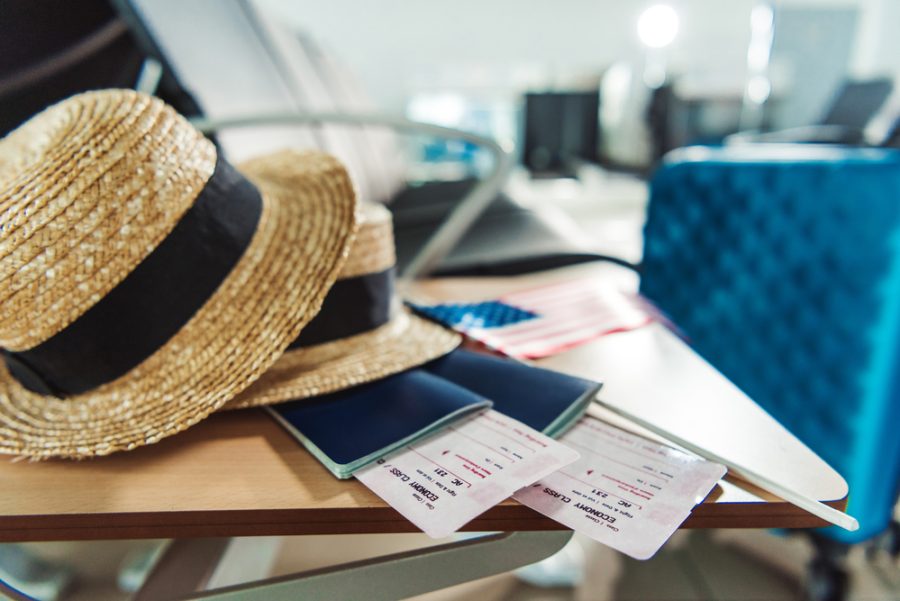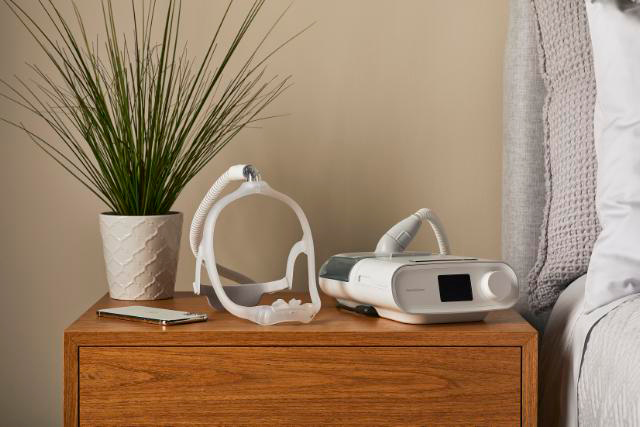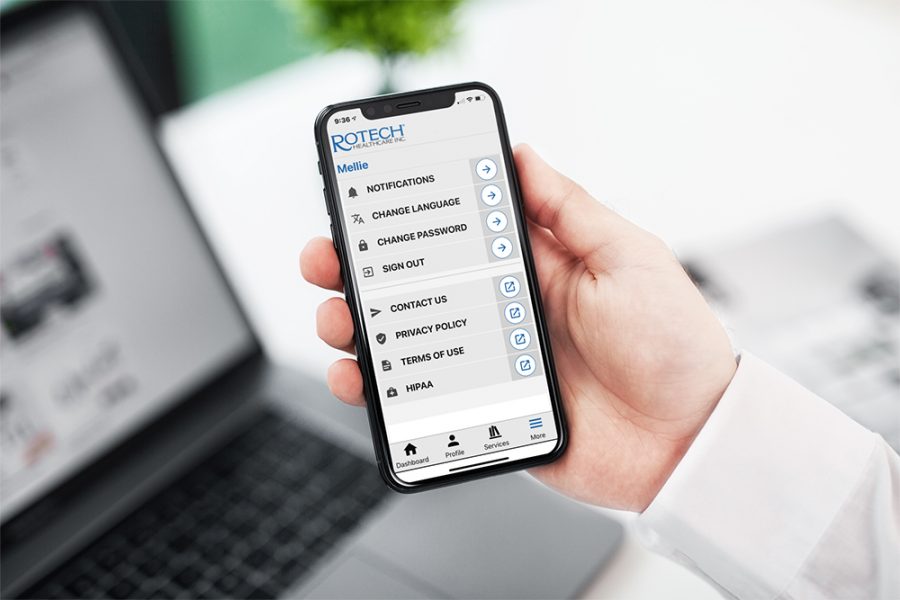Once you’re used to your CPAP, you don’t want to sleep without it — no matter where you might be. Going without your sleep apnea treatment will bring back the snoring, headaches, and daytime exhaustion that caused you to seek therapy for sleep apnea in the first place! Luckily, there are plenty of tips and tricks to help make your next trip as smooth as possible. Read on for everything you need to know about traveling with your CPAP machine.
How do I pack my CPAP for travel?
Carry your CPAP with you! Most CPAP devices come with a travel bag, which is the best way to pack your CPAP machine and equipment. When you pack up your CPAP, make sure you’ve thoroughly emptied and dried out your humidifier water chamber and included your power cord.
Do not check your CPAP as baggage or place it in your checked luggage. Not only can baggage handling be rough on a device, but if your luggage is lost, so is your CPAP! Cruise ships and domestic passenger trains also ask that you carry on your CPAP and keep it with you.
The Air Carrier Access Act prohibits discrimination on the basis of disability in air travel. It applies to all flights by U.S. airlines and flights to or from the U.S. by foreign airlines. Your CPAP is an assistive device, which means you can bring it on an airplane and stow it in an overhead compartment or under the seat in front of you. Assistive devices do not count towards the airline’s baggage limit if the bag does not contain additional personal items. Learn more about air travel with an assistive device and your rights in Air Travel with an Assistive Device, from the U.S. Department of Transportation.
Make sure your device is packed separately from your other baggage items, and the only things packed with it are necessary accessories. Some airlines (especially budget carriers that typically charge for carry-ons) may check to verify that your assistive device is the only thing in its bag.
Additionally, you’ll want to bring a copy of your prescription. Having your prescription with you can be vital if you get to your destination and something breaks or you need a crucial accessory. Being prepared with your prescription will help you be able to get any replacement CPAP equipment pieces.
How do I get through airport security with my CPAP?
All travelers are required to undergo screening at the TSA checkpoint. CPAPs, Bi-level or BiPAP machines, and APAPs must be removed from their carrying case and put through the X-ray machine. Your tubing, power cord, and masks can stay in the case. If you’d like, you can provide a clear plastic bag to put your CPAP device in for x-ray screening.
While most screening agents are very familiar with CPAPs, you still might find it convenient to add a tag that says MEDICAL DEVICE to your bag.
If a TSA agent requests to inspect your machine or swab it for explosives, you have the right to request that they change to new gloves. You may also ask inspectors to clean the surface they will use to inspect your CPAP.
Do I have to take out my CPAP if I have TSA Precheck?
Generally, travelers do not need to remove CPAPs from carry-on bags in TSA PreCheck lanes. However, checkpoint officers will provide guidance if they need to perform additional screening on your device.
If the agent asks you to remove your machine, you’ll need to send it through the scanner on its own. Additionally, if TSA PreCheck lines are unavailable, you must go through the standard security screening.
Do I have to tell the airline about your CPAP machine?
If you plan on using your CPAP on board, you most likely need to notify your airline at least 48 hours before your flight. There may also be seating restrictions based on FAA rules. In addition, in-seat electrical power is not always available on every aircraft or in every seat. You may need to bring external batteries with you to power your device. Check with your carrier well before your trip to find their specific regulations.
Can I cruise with my CPAP?
Yes! Cruise lines are very familiar with CPAP users. Major lines have disability departments that can assist you with whatever you need. Most cruise lines will provide you with an extension cord and distilled water. Many (including Royal Caribbean, Celebrity, Norwegian, and Disney) allow you to request these accommodations when you book or before your departure date. Check with your cruise line to confirm their policies and procedures. Many cruisers like to bring a roll of gaffer tape (available from retailers like Amazon or Home Depot) to tape down their extension cord in their cabin and reduce the likelihood of tripping over it!
Can I travel with water for my CPAP humidifier?
You can bring water, but if you’re carrying it on with your CPAP device, it must be in a sealed container of 3.4 ounces or less and fit in a quart-sized baggie.
You should be able to purchase distilled water at most destinations. Suppose you’re not planning on driving or stopping at a grocery store or pharmacy. In that case, delivery services like Instacart, Shipt, Postmates, and Doordash will often deliver distilled water and anything else you need (fees and upcharges may vary).
If you need additional water for your CPAP humidifier, you can also pack it in your checked luggage. Some larger resorts may also have distilled water available for purchase or use. Housekeeping departments often use it for irons and steamers — it never hurts to ask!
How do I clean my CPAP while traveling?
Even away from home, cleaning your CPAP mask and accessories is crucial. Keeping your mask and accessories clean is essential for effective sleep therapy!
If you have access to a bathroom at your destination, you’re good to go! Clean your equipment the same way you do at home, with warm water and mild, non-fragrant soap. If you have room, hang your tubing over a towel rack or shower rod to dry.
Many products are available to make CPAP equipment cleaning easier on the go. Wipes, sprays, and mask and accessory sanitizers can all help ensure your equipment is squeaky clean no matter where you are.
What other travel accessories do I need?
Make sure you pack your machine’s power cord, and you may also want an extension cord. Not all outlets are convenient, so this can help make sure you can sleep well — in regards to your CPAP — in any hotel room, rental home, or relative’s house. (We can’t guarantee the comfort of Aunt Mildred’s guest room bed, but at least you’ll be able to sleep healthfully!)
Traveling internationally? Your CPAP machine should have a label that tells you the acceptable power inputs. Check the voltage and the hertz at your destination to ensure they’re compatible with your machine! While most modern CPAP machines are dual voltage, you’ll still need a country-specific adapter.
It’s also a good idea to keep a CPAP battery like the Portable Outlet or another backup power on hand when you travel, whether for use in-flight or at your destination.
Bon Voyage!
Wherever your journeys bring you, we hope this guide helps you travel confidently with your CPAP!






